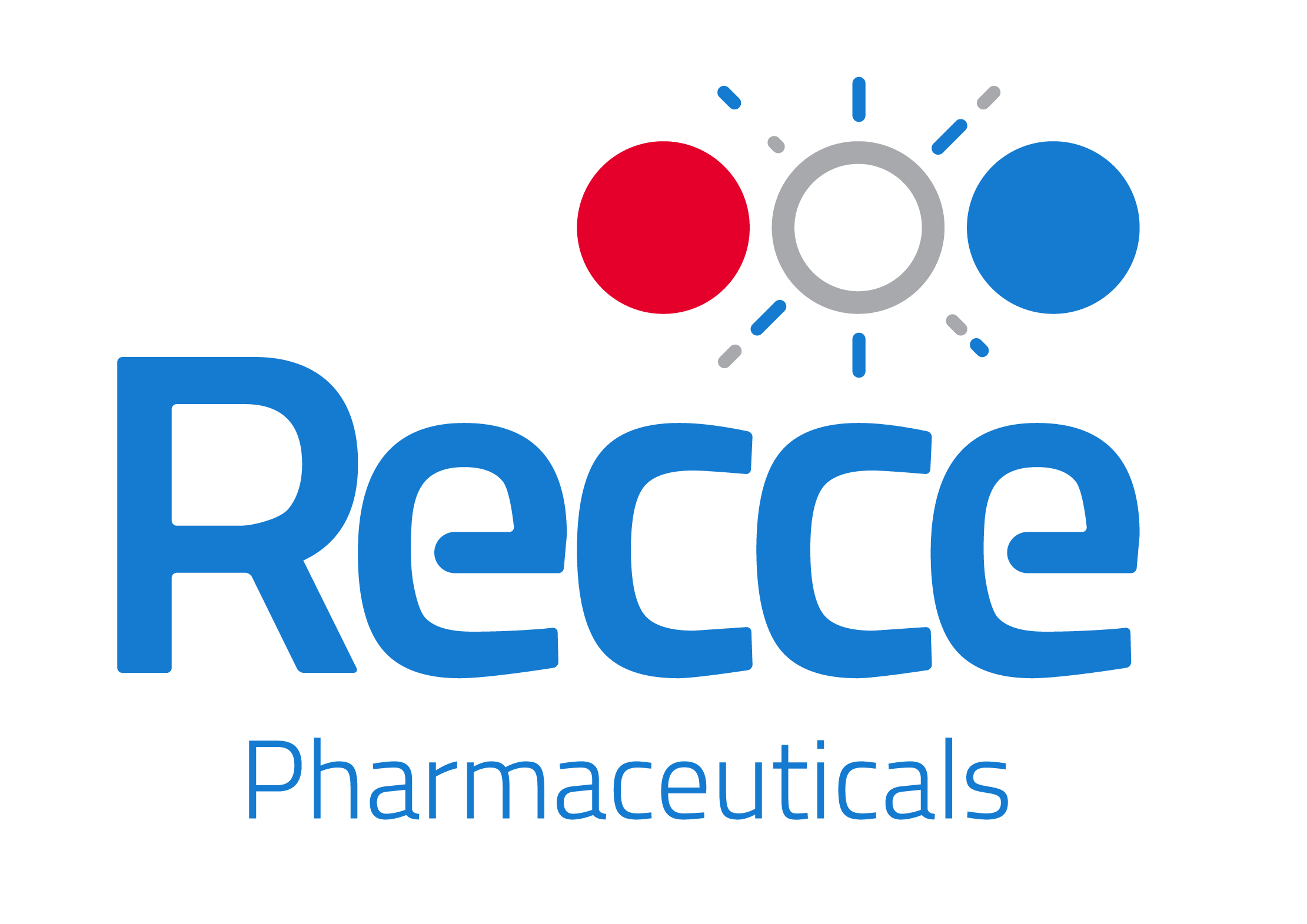Transcripts are auto-generated and may contain errors
SEP.EP.009.Video
Jackie Duda: [00:00:00] I was looking for good news about sepsis online, and much like my daughter found out that morning, there is no good news about sepsis online. It’s all death statistics and mortality within a year of having had septic shock. And I thought, well, that’s it. I’m cooked. I’m done. But then I was scrolling on Instagram and I saw this thing called sepsis alliance.
Nicole Kupchik: This is the sepsis spectrum, a podcast about antimicrobial resistance, sepsis, and how to expect the unexpected in your practice.
For the final Microbial Mysteries case. This season we are dusting off an interesting file from our archives, a complex case, and. And all too familiar wanted that at first glance, it offered little in the way of patterns. A newborn, a pregnant woman, a patient recovering from chemotherapy. No consistent symptoms, no clear links, [00:01:00] just a series of tragic outcomes.
What had been overlooked was not the pathogen, but the people. The assumption that they could all be treated the same, that standard protocols would suffice, prove to be a critical misstep. This is how sepsis and antimicrobial resistance continue to outpace clinical responses, not through unpredictability, but through systems that fail to adapt.
There are costs of uniformity in our care. The resistant organism in question didn’t thrive by chance. It evolved in an environment of misused antibiotics and systemic gaps. It’s seen the strongest drugs and it’s survived them all. By the time the infection appears, it’s already advanced. Beyond initial containment efforts, this is how sepsis and antimicrobial resistance continue to outpace clinical responses, not through unpredictability, but through systems that fail to adapt.[00:02:00]
Hi everyone, and welcome to our season one finale of the sepsis spectrum, or as we like to call the season microbial mysteries. I’m Nicole Kupchik, critical care nurse, clinical nurse specialist, and you are guide through the complicated and sometimes frustrating world of sepsis and antimicrobial resistance.
Today I’m joined by three powerhouse women who understand the fight against sepsis from every front of the battlefield, from the bedside in the body, and through the system. First up, Dr. Hillary s Spangler and Jackie Doda. Jackie is a journalist mother of four and sepsis survivor after years of battling chronic illness and disability, including pots, Ehlers-Danlos, and.
Crohn’s disease. Jackie’s become a powerful advocate and storyteller. She also moderates a sepsis alliance peer group and is launching a podcast on survivorship [00:03:00] and invisible illness in 2025. Dr. Hillary s Spangler brings a rare dual lens as both a physician and pediatric sepsis survivor. Her experience with critical illness led her to medicine.
She now champions smarter, more compassionate care for high risk groups, including older adults, children, and the immunocompromised. After the break we have last, but certainly not least, Dr. Mallory Perry-Eaddy. Dr. Edie is a pediatric critical care nurse, translational scientist and assistant professor at the University of Connecticut.
She’s also an NH fellow whose research explores inflammation, health disparities and recovery, and critically ill children, especially those facing sepsis. Together. Our guests today aren’t just changing the story of survivorship. They’re rewriting what recovery, equity and advocacy should look like at every level of care.
[00:04:00] Let’s get into it now with this, our amazing guests.
All right. I’d like to welcome Jackie Duda and Dr. Hillary Spangler to the show. Both are amazing women and both are sepsis survivors. So Jackie is a journalist who has written about sepsis and has started a podcast, and Dr. Hillary Spangler is now a geriatrician who, who has, uh, focused in internal medicine and has treated septic patients.
So welcome both of you to the show. Thanks for having us. Thank you for having us. Absolutely. So Jackie, I’m gonna kick it off with you. Um, can you take us back to May of 2021 when your sepsis journey began?
Jackie Duda: Yeah, it was, um, quite shocking because I thought I had an orthopedic indi uh, injury. I have Ehlers-Danlos Syndrome, Crohn’s Disease.
I’ve been [00:05:00] disabled since 2014. So hospitals I was no stranger to. I thought I had an orthopedic injury because my left hip was hurting. That Friday and it hurt, uh, until I couldn’t move my leg by 5:00 AM Saturday morning. Like the pain kept increasing and I couldn’t sleep very well. And I woke my husband up and my youngest daughter saying, I, for some reason, it was the strangest thing never happened to me.
I could not move my leg. It felt like it was weighed down like a thousand pounds. Uh, they called E-M-S-E-M-S came to the house, took me off to the hospital. My family’s seen that at least a hundred times before you think, you know, over the course of a decade. Bye, mom. See you later. Only as my children now describe it.
It was almost. Bye mom. Not gonna see you later.
Nicole Kupchik: And what, what specifically made them have that feeling?
Jackie Duda: Uh, when I was in the er, things started to, [00:06:00] like, I, I started to de uh, decline quickly and I went into respiratory failure. They put a ventilator in. I could hear the doctors talking about my CAT scan results.
They f the first thing they did was an abdominal CAT scan, and I thought they were crazy because I had a pain in my hip, not in my gut. Um, it turned out it showed I had a colon perforation and my labs were off the charts, like my labs were. I had high lactic acid, high white blood cells, you name it, platelets.
Everything was a mess, and they knew that. I was very, very lucky and fortunate to be in that hospital, and the doctors knew that I was going into septic shock because I had an infection and my husband. Went numb and into shock himself out in the hallway. ’cause he was standing out there with the EMS drivers and they, ’cause I guess they hang out to see what the doctor’s gonna tell them to do.
And the doctor at first thought maybe they could do surgery [00:07:00] there. He called, called down a surgeon, but I was declining so rapidly and they couldn’t keep my um. Uh, blood pressure up. My husband never forgets about that. Every time he tells people about the story, he keeps telling them how they could not get my blood pressure to stay up.
The doctor asked the EMS standing next to my husband how long to drive her to Baltimore to shock trauma, and they said, an hour 20. And he said, well, she won’t make that. So call a helicopter, call a pilot. Our two daughters live with us and my son and his wife had their own home and he told the girls when he walked in that I had sepsis where I was in septic shock.
My one daughter, Elise looked up sepsis and her, she says her heart sank because it didn’t she when she saw what sepsis was and she and my other daughter were talking like dad’s really scared and he can barely talk and I don’t think mom’s coming home this time.
Nicole Kupchik: Yeah, that I [00:08:00] can’t even imagine. How scary.
And you were very sick needing mechanical ventilation and blood pressure support. And so how long were you in the hospital?
Jackie Duda: I was in, uh, SICU for eight days, and then they took me to the step down at University of Maryland Hospital. I was on like the GI Wing for another week, and then they had to transport me to inpatient hospital rehab at Univer, also at University of Maryland and where I had to learn to walk again.
Uh, I was really weak. I had a temporary, uh, colostomy had to be placed because they took out that portion of my colon that was so blown away and they, uh, had to let things heal, uh, for seven months. Um, but rehab was really, really challenging. ’cause that was six days a week. Sundays we got off, but, you know, six days a week.
Six hours a day, work, work, work. Just trying to walk
Nicole Kupchik: and do basic things, I’m sure. Right. All over again.
Jackie Duda: Ot. Yeah, feed, feed yourself, [00:09:00] all of that good stuff.
Nicole Kupchik: Yeah. And what has your journey looked like since, so that was 2021. How do you feel life has changed since you were sick? If we’re better or maybe not in a great way.
Jackie Duda: Definitely for the better in that, like I, I capture every moment. I’m sorry guys. No, it’s okay. I capture every moment that I spend with my family, my friends. Every moment is really, really precious to me every moment. And, um, I have, uh, in the bad way. I have really bad PPTS. And anytime, like my husband and I, I, I go to a lot of specialists and we, we see a new doctor and my husband sometimes sees the same doctor because he’s also disabled.
And he was sitting there recently at an appointment and he, we, I was trying to tell the doctor, I said, look, there’s a couple things you gotta know about me. I’m really scared and I have a lot of [00:10:00] PTSD and you have to explain things really, really well to me because I have an analytical brain and if I understand it, I’m good.
And then I said, or I might run. And my husband was just sitting there with his arms folded. He says she’ll run, he says she has, she has runway right out the door, right out of a doctor’s appointment.
Nicole Kupchik: Yeah. And I think this is the part of survivorship that doesn’t always get talked about, right? Is okay.
We’re like every, the healthcare provider’s like, yay, you’re going home and then you’re, you go home and you have to pick up all the pieces. Exactly.
Jackie Duda: My brain was, uh, scrambled eggs for at least a year, so I found Sepsis Alliance and they kind of helped me start healing. In what way did Sepsis Alliance help you start healing?
I was looking for good news about sepsis online and much like my daughter found out that morning, there is no good news about sepsis online. It’s all death stati, uh, statistics and mortality within a year of having had septic shock. And I thought, well, that’s [00:11:00] it. I’m cooked. I’m done. But then I was scrolling on Instagram and I saw this thing called sepsis alliance.
I went, well, it’s a catchy name. Lemme look into this. And I went to their website and I saw they had peer support groups. And this was January. This was about a month after my January or February, about a month, a or two after my reversal surgery, which was successful even though I had convinced myself it wouldn’t be, I, um, found them.
I joined, it was the pilot group, then the pilot peer support group for survivors. Uh, Megan and all them were on there, and people I still talk to online to this day, which are great people. And they, when I saw the other people in there. It made me feel like I wasn’t gonna die
Nicole Kupchik: well, and I think it’s just important to connect with people that have been through something similar that you’ve been through, just to know that there is life after sepsis, and sometimes you do hear the doom and gloom.[00:12:00]
But there’s also positive stories and survival stories as well. So, speaking of which, Dr. Spangler, you are also a sepsis survivor. You spent your 11th birthday in the hospital with sepsis. Tell us about that and tell us about the journey that led you to medicine.
Dr. Hillary Spangler: Yeah. Uh, thanks so much and thanks so much, Jackie, for sharing your story.
So much of it resonated with me and, um, as Nicole’s been mentioning the commonize in between these stories and, and so certainly, um, it was a, a long time ago now, but certainly a fundamental part of my journey to medicine. Um, I had a, um, a wonderful care team and a support system in my community that really helped in my recovery.
I spent about a month in the hospital, um, missed a lot of my sixth grade year. I think at a young age, seeing these really supportive factors that came through this kind of horrific experience, especially for my family, um, really inspired me [00:13:00] to go into medicine or in the healthcare field because I, I wasn’t sure of another way that, and maybe as cliche as it sounds, but give back to this.
Kind of much bigger than me community that helped me get back on my feet at such a young age and really propelled me and gave me a purpose, um, moving forward in life. And I’ve never really second guessed that since that event. And so, um. Hearing, you know, Jackie, you talk about your purpose now and what you’re doing in your, in your work.
I, I just, that again, resonates with me so much because I feel that medicine is a vocation for me and, um, because of this experience. And so, um, certainly there’s the ups and downs and, and the learning to walk again and, and the pain that goes with that and the very character building experiences. Um. You know, having some things that maybe don’t quite work right.
Um, on a musculoskeletal system, but, you know, it’s, um, it, it’s, I I take those as friendly reminders of a time that, of, [00:14:00] of why we’re doing this. Um, and so again, when I heard about Sepsis Alliance, which was actually when I was in medical school, um, I was like, wow, this is a really cool community. Because when I had sepsis, my family didn’t know what it was.
That was the first time they were hearing the term. Um, and so from, you know. Having an organization that has really spearheaded, uh, community knowledge about sepsis and getting to be a part of that is just really, really cool, and I’m really, really thankful for.
Nicole Kupchik: So to both of you, let’s say somebody is listening to the podcast right now, who’s going through what you went through, and if you could think back to kind of that time, what is a piece of advice you would give to somebody who’s experiencing sepsis and like what would you tell them to just in a positive direction, to relay that there is hope?
What? What do your advice be?
Jackie Duda: That’s, that’s an excellent question, and I would say without question, [00:15:00] feel what you’re feeling. Let yourself feel the anger and the fear and the sadness, and find people who are safe. For you to do that with? Because when people would tell me, you know, oh, you’ve gotta look at the bright side, or just think positive, that is not my thought process at all.
I gotta go through the good, bad and the ugly to get out on the other side. It’s just been me since day one, and that would be my advice. Let let feel your emotions, the whole gamut and find people who don’t mind sharing those emotions with you as sitting and listening.
Nicole Kupchik: And then Jackie, did you end up getting counseling or talking to somebody like on a more professional way about the PTSD you experienced and everything you’d been through?
Jackie Duda: Yes. And again, I was, I was very lucky because I couldn’t, um, being [00:16:00] disabled, I’m on Medicare and I couldn’t find providers in my area who were either not accepting, like new patients or, you know, they, they, I, so I couldn’t find a practice practice, but I was lucky in a deacon at my church. Just retired from 30 years working in family counseling and therapy for the one of the counties down in Virginia.
So he was available and he would do counseling with people who wanted. And so I was able to go to him and, uh, for two years, once a week I was there every week. I needed it badly.
Nicole Kupchik: Well, it’s a lot of trauma to work through, truly. You know, and I’m glad you sought help. And so you, do you feel like it was something that really aided in your journey to healing?
Jackie Duda: It did because he was able to give me another perspective outside of, uh, my family and I, my and my husband would go to the therapy sessions with me, um, so he could [00:17:00] understand because what he was seeing me behave like after sepsis was something he had never seen before. Or my daughters or my son had never seen this before.
They were like, who is this woman? I was a different person. Like, totally, and I’m still different, but. We’ve calmed that part down, but it was, it was the height of COVID, so we really couldn’t have visitors, friends, we couldn’t have people coming into the home like normally if somebody’s been critically ill and people would be able to come in and help out, it was me, my husband, my daughters in the, in our little unit, and then my son and his wife helping out.
But it was, I don’t know, I dunno how to describe it, but the four of us inside of. It’s sort of like just being in this small environment, your own little sphere. So it was important to talk to someone else and with my husband being there so that I could get different perspectives on what I was feeling and [00:18:00] thinking and doing.
And I
Nicole Kupchik: don’t know if people really understand like that. Only can a patient experience PTSD and a survivor, but their family can as well, and those close to them. And I don’t think we talk enough about that.
Jackie Duda: No, no. My youngest daughter feels that vehemently. That it is not dog. She still is traumatized in some ways from that.
Nicole Kupchik: Yeah, well, in healthcare we’re starting, we have, we actually have a name for it now. We call it pic Syn, uh, pics, post ICU syndrome, or we’ll call it PTSD. Um, a lot, a lot of times we’ll use those terms interchangeably, but I just don’t think, even like when we’re discharging patients from the hospital, I think there’s always room opportunities to really say, Hey, you know, when you get home, you might be feeling down or.
Might have trouble emotionally getting through some of this, and you can, it’s okay to get help.
Dr. Hillary Spangler: And, and just to echo what Jackie said about the community piece, um, that’s something of just find, find those people. And, and I hope you already have those people. And, and, [00:19:00] and I will say a lot of my substance experience, um, what I remember of it is in the rehab process.
Um, and so it, it, you know, as, as still as it might sound, I, I think just having the mantra of. You can do this got me through a lot of days and I have, um, and as I’ve mentioned before, I have some wonderful parents that were telling me that when I was being told that, you know, you may not walk again and you may be in a wheelchair.
And, um, and so I think that just changed my whole experience and ability to heal and, you know. Talking about PTSD of family members. I just can’t even imagine, uh, what my parents went through being a parent now and thinking, oh my gosh. Um, yeah. And then have, and then having a child that you’re having, um, these things happen to you outta your control and you’re trying to do your best to keep, keep it together and get them to rehab appointments and all of that after the fact.
Um, [00:20:00] so again, shout out to parents and family members out there doing this, um, and, and you’re not alone. And I’m glad, Nicole, you brought up just, we don’t talk about this enough. And even just with it being hospitalized and being in the ICU too.
Nicole Kupchik: Yeah. Dr. Ler, do you feel like your experience being a pediatric sepsis survivor, do you feel it’s significantly impacted your practice as a geriatrician?
Dr. Hillary Spangler: Yeah, and that’s a great question. Uh, I certainly, so in, in, in a lot of it is in the realm of education and what I, I want to give people the words that my family didn’t have. Um, so when someone comes to me and says, I’m, I’m concerned. I have sepsis, I’m going great. Sepsis, sepsis alliance is, uh, is reached to someone.
But, but certainly, um. Just making sure that in my outpatient [00:21:00] practice, if we’re prescribing antibiotics or somewhere, you know, someone has a urinary tract infection, giving them the, this is what you should be on the lookout for. Um, and so that certainly is a, a key part of my practice, um, because of, ’cause of this bias.
That I have. Sure. Um, wonderful bias that I have. Mm-hmm. Um, and, and when I was doing work in pediatrics, um, back in my younger years, that was a big piece of some of the educational pieces I would work on with. Um, high risk groups like, um, children with cancer in their families, so immunocompromised patients and actually giving them brochures and things with actually what are the signs and symptoms of sepsis and who do you call when you’re worried about that.
So, certainly has impacted, um, kind of the projects that, uh, I have, uh, been involved in in my career thus far.
Nicole Kupchik: Yeah. Well, and I, I love that you both have gotten so involved with Sepsis Alliance. ’cause I completely agree. I think it’s an amazing organization who has helped so many people and um, and has really [00:22:00] kind of shined a bright light in an area that can be very dark, you know?
And so Well I wanna thank both of you for joining us today. We’re gonna go to break, and when we come back, we’re gonna be joined by Dr. Mallory. Perry Edie, who’s a pediatric critical care nurse, translational scientist, and associate professor at the University of Connecticut.
Are you a nurse infection, preventionist, or healthcare professional who wants to stay ahead of the curve? Visit sepsis podcast.org to learn how you can receive free nursing CE credits by listening to or watching the sepsis spectrum. It’s our way of supporting you and together better understanding the ever evolving world of sepsis care and a MR.
And now back to the show.
I am excited to be [00:23:00] joined by Dr. Mallory Perry Edie, who’s a pediatric critical care nurse, but she’s also a nurse scientist. So welcome to show Mallory.
Dr. Mallory Perry-Eaddy: Thank you. Thank you for having me.
Nicole Kupchik: Yeah. So can you tell the audience just briefly what you do in the world of sepsis?
Dr. Mallory Perry-Eaddy: Sure. So like you mentioned, I’ve been a pediatric ICU nurse for about 10 years now.
Um, and my research really is focused on survivorship and understanding the way acute phase biomarkers and inflammation may impact the way children recover and survive. And we hope to optimize that functional recovery through what we find in acute phase.
Nicole Kupchik: So what are you seeing post discharge in a lot of your pediatric patients that are surviving sepsis and septic shock?
Dr. Mallory Perry-Eaddy: Absolutely. So, uh, the post intensive care syndrome, uh, PIX Peak Framework really kind of guides the work that we do post sepsis as well. And what we’re really finding is that about a third of children will not return to their functional baseline after an ICU stay, particularly with sepsis. [00:24:00] Um, you know, there are cognitive changes that are happening, emotional and the.
Thought of children work and they don’t work. School is their work. And so they’re missing a substantial amount of school as well. There are physical deficits that are occurring, so it really is substantial in these children and what they’re re uh, recovering with.
Nicole Kupchik: And what do you think is leading to a lot of that are, are these children developing delirium while they’re hospitalized or like in just in your pediatric world, what do you feel is happening?
Dr. Mallory Perry-Eaddy: I believe it’s multifaceted. I believe delirium is certainly an aspect of it. We do know there’s a great proportion of children experiencing that. Also, the stillness that happens in the ICU, A lot of times these children are mechanically ventilated. They may have, um, paralysis that is going on that we have done to them.
Um, and these are active children previously, and so really disrupting their routines. Um, and then familiar caregivers may not be necessarily able to be there the way that they usually are. So there’s that emotional dysregulation. The physical, the functional, the [00:25:00] cognitive all, and then for me, particularly, the inflammation that we see really can impact, um, the, the brain, the, the every aspect of the child as well.
Nicole Kupchik: So let’s talk a little bit about just the delirium. ’cause I think a lot of people have this misconception that pediatric patients don’t experience delirium, but what you’re finding is they actually do. And so what type of screening tools are being used at the bedside in the pediatric patient population to identify delirium?
Dr. Mallory Perry-Eaddy: Absolutely. There’s various scales that are being used in different pediatric ICUs, particularly at my institution. We use the Cornell Assessment of pediatric delirium or the Cap D. Um, and it really takes into account the developmental level of the child as well. Um, and it’s broken up into infant to school age, to older child, and really understanding, because again, some of these kids are preverbal or they’re nonverbal.
Um, so we’re able to really assess it that way. Um, and looking at kind of the overall aspect of the day and how the child is responding. To us as [00:26:00] care providers.
Nicole Kupchik: Well, thanks for sharing that with us. ’cause I think there, you know, again, it would just be really difficult to pick up delirium in children.
Dr. Mallory Perry-Eaddy: Absolutely. Is Is very difficult depending on their developmental age and their ability to talk, et cetera. So. Absolutely.
Nicole Kupchik: So how do you handle that? Is a lot of it, is it just like the parent saying they’re just not right, they’re not the same? Or how are you identifying and dealing with that?
Dr. Mallory Perry-Eaddy: Definitely looking at the parental response to that.
And that’s when the parents are able to be there, right? ’cause sometimes parents still have to work. Um, so really it’s the, a parent assessment and then also get us getting to know the child for quite a bit and being like, something might not just be right, something is different. The child’s acting a little bit different.
Um, they’re kind of staring off into the distant, if they’re hypo, uh, or potentially maybe they’re having a more of an active, uh, delirium where they’re kind of off the walls and their skin’s crawling, right? So it’s really hard and each child is different and develop. It mentally as well. Um, we have to really be cognizant of that.
Nicole Kupchik: And can you speak a little bit to, are you [00:27:00] seeing PTSD in these patients after a hospitalization with sepsis or septic shock?
Dr. Mallory Perry-Eaddy: Sure a lot of patients do have PTSD in the family systems as well, because, you know, we’re very, very family centered in pediatrics. However, there has been really a shift in the research that we’re doing to not looking just at PTSD, but also the idea of post-traumatic growth and the way that that impacts children and families afterwards as well.
Um, and really reframing the distress to something that they can grow from. So that is where we are kind of going within the post picu uh, sepsis space.
Nicole Kupchik: So what types of assistance and therapy would that include?
Dr. Mallory Perry-Eaddy: A lot of it, I believe, is anticipatory guidance while they’re in the hospital, and really understanding which children may be most at risk of having functional decline or having these emotional dysregulation once they leave, and really preparing the families for that and working collaboratively with all providers, not just, you know, our nursing [00:28:00] team or medical team getting social work involved.
Child Life is a great resource that we have in our hospitals that can really help the families engage and understand what life may look like on the other side. Oh, interesting. Wow.
Nicole Kupchik: Well, I’d love to shift gears a little bit and talk about the inflammation that you’re seeing. So you’re measuring inflammatory markers.
Tell us a little bit about that. So is this like an optional follow up that a parent would decide, you know, I want my child to be seen, or do you just have appointments made on discharge, or what does that look like?
Dr. Mallory Perry-Eaddy: So the work that I’m doing is funded by the NIH and essentially what this work is looking at is we collect biomarkers.
They have the consent to be a part of the study, but we collect biomarkers during the inpatient stay, ideally within 24 to 48 hours of the sepsis diagnosis. Um, and then we’re getting biomarkers throughout this day. When they leave the hospital, we’re no longer collecting biomarkers. However, we are collecting longitudinal data up to three months, looking at their functional status, their [00:29:00] emotional regulation.
Their sleep, um, the family systems, uh, pain that the child may be experiencing as well, and really trying to see if there’s an association between the inpatient biomarkers in these changes that are happening after the ICU.
Nicole Kupchik: And what types of markers specifically are you measuring in the hospital?
Dr. Mallory Perry-Eaddy: Absolutely. So we’re doing kind of the standard biomarkers that come out, um, in the data. Uh, the order sets like CRP, um, lactate, uh, procal, those ones we’re kind of doing by the physician orders, however. We are looking additionally at cytokines and chemokines, which are those kind of inflammatory markers that aren’t really cleared, um, to be due point of care.
Um, however we look at those later in the lab. And then also, interestingly, we have samples that we have DNA and RNA to understand if, you know anyone has a predisposed um, genetic disposition to potentially having poor outcomes after as well. Oh wow. That’s fascinating, huh?
Nicole Kupchik: [00:30:00] Now one of the things I wanted to chat about with you is we know that when patients survive sepsis or septic shock, they often will experience infections that are recurrent once they’re discharged.
So what are you seeing in the pediatric patient population?
Dr. Mallory Perry-Eaddy: Absolutely that, that is a large problem. Um, a, a substantial amount of children are readmitted to the ICU with, um, either recurrent infection or immuno paralysis in the sense of they’re really, their immune system really just never recovered. Um, and so with that, we are seeing those.
Um, and particularly in the pediatric ICU, we see that quite a bit because our population has really shifted from what I’ve even seen from starting to now where we have a lot of medically complex children. So we also have some of these kids who, what we call chronic critical illness where they just never get better, they never really recover.
Um, and so these kids are kind of in and out of the hospital. And so we do see that quite a bit. Um, and [00:31:00] especially as pediatric ICU and critical care has evolved and we’re able to save kids, um. We’re seeing a lot of this recurrence and coming back. So that is a problem that we are seeing and hopefully this work will kind of shed some light onto that, like what those biomarkers may be that we can look at.
Nicole Kupchik: Yeah. Well and maybe, hopefully in the future, drive therapy as well, you know, to maybe. Absolutely. You know, ’cause their immune systems are just on overdrive, right. Once they’ve been sick like that and you’re depleting what you have, and then that’s the problem. Wow. And then are you seeing an uptick in antimicrobial resistance or are you seeing antimicrobial resistance and how are you dealing with that?
Dr. Mallory Perry-Eaddy: Yeah. So I think it’s really targeted interventions is really what’s most important for that. Um, very similar to adults. You know, we have our kids, they come in, we’ve got like an hour to get in our antibiotics, um, and get in our boluses. Um, the, the issue is, is that we’re kind of giving a broad spectrum in the very beginning.
Um, but then really once we’re kind of getting these sensitivities back, we really need to tailor that to children. So we’re not [00:32:00] getting that resistance because we have seen quite a bit of these bugs that are, that are really resistant. So really tailoring it to that child. Once we get in those initial doses is important.
Nicole Kupchik: Yeah. And so what other therapies are you seeing these children needing? You know, once, so let’s say they’re discharged, now we’re getting them back to school. Like are we looking at physical therapy, occupational therapy, counseling? Like what types of therapies are they needing?
Dr. Mallory Perry-Eaddy: It’s multimodal, I think a lot of physical therapy, um, to increase that function, but occupational as well because as I mentioned, there’s a developmental spectrum with these kids.
Um, and so what, uh, an infant who survived versus what a 15-year-old survived, are gonna have two very different needs, whether that be something as simple as feeding, uh, for an infant versus with a child learning how to, uh, dress themselves. Right. So definitely developmentally appropriate physical and occupational therapy, uh, support, mental health support if.
They need it as well. Um, [00:33:00] is very, very, uh. Important to this population. We’ve actually a team of, I’ve actually just worked with, um, doing a survey of school nurses because we do know that these children are often going back to school, the older children and school aged children, and really understanding the needs of school nurses.
And many of them aren’t really familiar with the idea of post intensive care syndrome, um, particularly of those kids who have sepsis and they’ve had kids who have had sepsis and come back. So really also educating, um, those frontline providers that are going to care for these children once they’re back in the community is imperative.
Nicole Kupchik: Yeah. And then who does that? Is it like a program that, like for example, that you work for or like who does that education?
Dr. Mallory Perry-Eaddy: That’s the thing. We’re not that, you know, the sepsis alliance has done a really great job in providing education about the acute phase of illness and recognition of sepsis, um, in school aged children by school nurses.
However, there’s really not many programs looking at kind of like what that recovery phase looks like. And so that’s what we’re trying to understand. Are there programs like that? Um, and if there are, how do we leverage them to a national wide, um, uh, practice? [00:34:00] ’cause right now there really isn’t.
Nicole Kupchik: Yeah, I can only imagine because, you know, our healthcare system naturally is segmented and if those dots don’t completely connect, it would be really difficult to kind of think about the continuum of care flowing easily.
Dr. Mallory Perry-Eaddy: Absolutely.
Nicole Kupchik: You know, in any really any adult
Dr. Mallory Perry-Eaddy: or pediatric patient. Absolutely, and, and that relies a lot on the fact that once a child is discharged, that they’re actually able to have the resources to either make it to school or make it to a primary care physician or a pediatrician. So a lot of that relies on that.
So a lot of times we are also interfacing with social work too, to make sure that discharge wise, see children have those resources set up for them.
Nicole Kupchik: Yeah.
Dr. Mallory Perry-Eaddy: Wow.
Nicole Kupchik: So lemme ask, see. The post discharge space and kind of this chronic, you, you called it chronically, critically ill inflammatory response. Like, where do you see this all [00:35:00] going, let’s say in the next 10 years?
Like, what would you like to see? Um, just, you’ve got a huge expertise in this, so what would you like to see available for these kids?
Dr. Mallory Perry-Eaddy: I would love to see post sepsis clinics kind of spring up. Um, we don’t really have those in pediatrics. There’s a few post ICU clinics, um, that have come up for children. I know that’s more popular in adult spaces, really don’t have them for children.
And having follow-up programs to really follow these families and guide them to what life can look like, understanding that readmissions may be possible. What you went through, you know, you’re not alone and there are resources. Um, we’ve got segmented things. There’s websites here and there, but no really, um.
Clinics are looking at these children and really providing them with the care that they need, and I think that’s what’s most important.
Nicole Kupchik: Yeah, I mean, ’cause I can’t even imagine, like as a parent, if I’ve never worked in the healthcare space, like I wouldn’t even understand what my child needs, let alone know where to take my child.
I just, I imagine that would be really overwhelming. Absolutely. Yeah. Well, I, I think that would [00:36:00] be absolutely amazing. Well, you know, I just, I wanna thank you for everything you’ve done. You’ve done some amazing work in this Thank you. The whole space and just pediatric ICU and then, uh, post discharge space.
So, any parting thoughts or any words of encouragement if this, if maybe let’s say a parent is listening to this.
Dr. Mallory Perry-Eaddy: If ever you feel something is off with your child, you know your child best. And particularly with sepsis, that’s very important. You know your child, you know the way they look generally, you know, when they look, when how they look when they’re sick.
Always advocate and speak up even you’re never wrong. And even if you feel as if you are, we’re listening and, and if someone’s not listening, you keep advocating. So I think that’s what’s most important, particularly in sepsis and especially as your child goes home because you know your child best.
Nicole Kupchik: Yeah, I think that’s some, some great advice.
So, and again, I just wanna thank you for everything you’re doing ’cause pretty amazing work and a population that is definitely, you know, there’s, there’s opportunities for support for that population.[00:37:00]
This episode was absolutely amazing to just really discuss all facets of sepsis care with a survivor, with a pediatric specialist, with a geriatric specialist, and then one who’s doing Mallory, who’s doing so much amazing research. With the NIH and just, you know, I just think it really brings to light how complicated sepsis is and really what a long path so many of these patients have to take.
Well, that’s a wrap of season one. I have thoroughly enjoyed hosting this podcast. This season has been so meaningful, speaking with survivors, advocates, and experts who are moving the needle on sepsis care and a MR. I’d also like to say thank you to Sepsis Alliance for the work they’re doing in educating the public as well as healthcare providers on the complicated topic of sepsis.
We’d love to hear your feedback [00:38:00] on the first season of the sepsis spectrum. So any feedback or any topic ideas you have, please send us a message. Uh, you can email us at info at. sepsis.org. If you like the show, we want to hear about it. Please leave a review wherever you’re enjoying this podcast. It helps a ton.
You can also reach me and our awesome team@infoatsepsis.org or visit sepsis podcast.org to share any stories of your own. Questions or concerns, or even episode ideas to learn more about Sepsis Alliance, visit sepsis.org. And if you wanna help me and others in spreading the word about sepsis at a MR. We are in August now, but next month in September, it’s sepsis awareness month and not too long after that, starting November 18th is world a MR Awareness week.
So let’s all keep ourselves and everyone we work with and. Formed, maybe even share an episode of the sepsis [00:39:00] spectrum with them to help. The sepsis spectrum is brought to you by Sepsis Alliance. I’m your host, Nicole Kch. Our executive producers are Allison Strickland, Hannah sas, Claudia Earth, and Alex Colman.
Our producers are Erin, corny, Rob Goldman s Shahnti Brooke, and me Nicole Cick. Our post-production producer is Tim Scott. Our editor and engineer is Jason Portizo. Our music is by Omer Ben-Zvi. To learn about sepsis alliance’s podcast, legal disclaimer and compliance policies, you can visit sepsis podcast.org/disclaimers.
The sepsis spectrum is a human content and sepsis alliance production.
Thanks for watching. I hope you’re enjoying the sepsis spectrum. Leave a comment below and let me know if you want to binge some more episodes. Just click that playlist right over there and if [00:40:00] you’re feeling super generous today, give this video a like, subscribe if you haven’t hit the bell. All the things.
And of course you can also listen on the go wherever you get your podcast. Bye.































